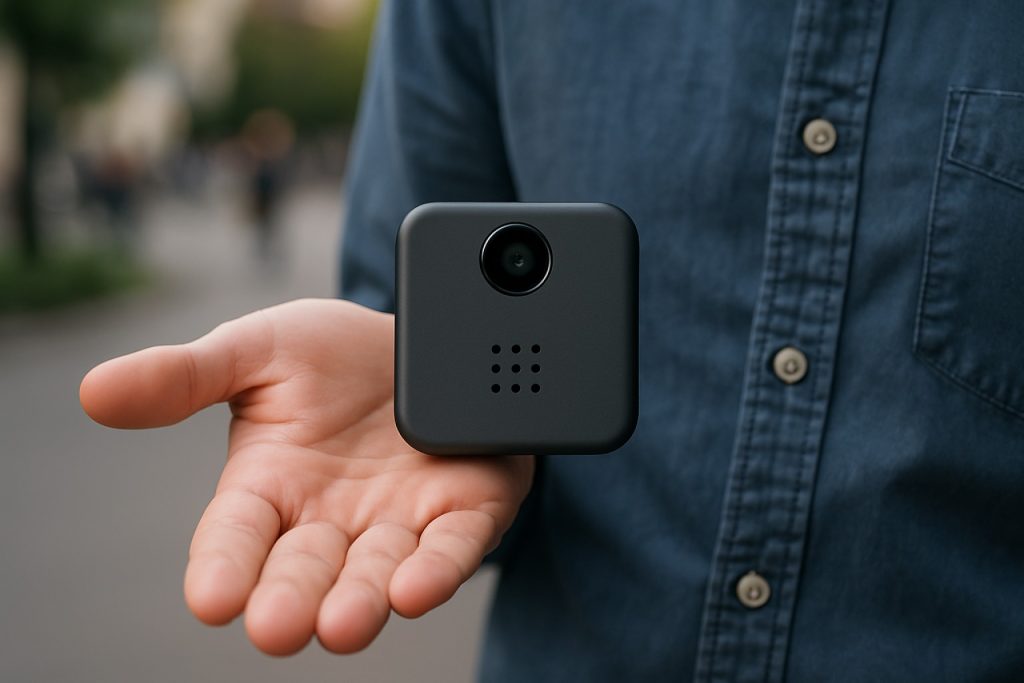
- OpenAI, led by Sam Altman, is developing a compact, screenless AI device intended as a “third core device” alongside laptops and phones.
- The device prioritizes context-aware intelligence, always listening and integrating seamlessly into daily life without traditional screens or notifications.
- Designed by Jony Ive, its look is elegant and minimalist, focusing on discreet and functional interaction.
- Strong privacy measures are rumored, reflecting Altman’s emphasis on user protection and organizational secrecy amid fierce competition.
- An equity deal to acquire io highlights OpenAI’s ambition to reshape technology categories and potentially add substantial value to the company.
Picture this: A device so compact it could disappear into your jacket pocket, yet powerful enough to rival the tech giants on your desk. The hum of innovation is alive at OpenAI—and the future may look nothing like your laptop, your phone, or even your smartwatch.
Sam Altman, the confident force behind OpenAI, has charted a new course. At a private meeting with employees, he revealed the birth of a device distinctly removed from the screen-obsessed norms of today. No glowing rectangle, no blinking notifications at your wrist. Think of it instead as a discreet sentinel—perceptive, aware, always listening for a prompt or a command.
Rather than another wearable or augmented reality glasses, Altman imagines this AI companion as a “third core device,” seamlessly integrating into daily rhythms alongside your MacBook Pro and iPhone. Minimalist yet sophisticated, this screenless marvel could nestle on your desk, slip into your handbag, or remain tucked inside a suit pocket—responsive, reliable, and unobtrusive.
- Unified Intelligence: Always present, this AI understands context, location, and intent, blurring the boundaries between physical and digital life.
- Invisible Design: Its form, shaped by the legendary Jony Ive, strives for elegance without spectacle, prioritizing function and human connection.
- Ultra-Private: Given Altman’s insistence on secrecy, the device is rumored to employ robust privacy measures, shielding users from unwanted surveillance.
The stakes are enormous. OpenAI’s $6.5 billion equity deal to acquire io—Jony Ive’s brainchild—signals not just a leap in hardware but the creation of an entirely new category. Altman, brimming with ambition, reportedly forecasted the potential to add $1 trillion to his company’s value, suggesting seismic shifts in the way we live and work.
Yet, the halls of OpenAI are buzzing with tension. Altman, wary of prying eyes and swift-moving competitors, has insisted that secrecy is paramount. A recent leak of his remarks has cast the challenge of trust into sharp relief—when innovation advances at breakneck speed, how much transparency fosters security, and how much breeds vulnerability?
As the tech world waits in suspense, one fact is clear: The race to create the ultimate AI companion device is on. With Altman and Ive at the helm, OpenAI isn’t just chasing the future—it’s designing it, one unseen revolution at a time.
You Won’t Believe the Hidden Challenges Behind OpenAI’s Secret AI Device!
-
Pro: Seamless Integration with Everyday Life
The device, envisioned by OpenAI and shaped by Jony Ive, aims to become a truly invisible tech companion—always ready, yet never intrusive.
-
Con: Potential Privacy Concerns
Although promoted as “ultra-private,” the idea of an always-listening gadget, no matter how secure, stirs fears about surveillance and misuse of intimate data.
-
Limitation: Screenless Experience
By eliminating screens, the device departs radically from current user interfaces, challenging how people interact with and trust their technology.
-
Controversy: Secrecy Over Transparency
Leadership at OpenAI insists on intense secrecy, creating internal friction and public speculation about what’s being developed—and whether users’ interests come first.
-
Con: High Expectations and Market Pressure
With reported ambitions to add $1 trillion in value, the stakes are sky-high. Such visionary goals from OpenAI risk disappointment if the reality doesn’t live up to the hype.
You Won’t Believe What’s Next: The Future of AI Companion Devices Revealed!
-
Exponential AI Hardware Adoption:
Experts foresee AI companion devices moving from niche innovations to mainstream essentials, backed by OpenAI’s ambitious investments and design pedigree. Major tech players, including OpenAI and Apple, are expected to accelerate this shift, making AI companions as common as smartphones within the next few years.
-
Seamless Ambient Computing:
The rise of screenless, voice-first devices will blur the lines between our digital and physical worlds even further. Advanced context-aware intelligence, a hallmark of OpenAI‘s vision, will power devices that anticipate needs and adapt in real time—creating new standards for how we interact with technology.
-
Privacy-First Solutions:
A new era of ultra-private personal tech is on the horizon. In response to increasing public concern, forthcoming AI devices from companies like OpenAI will likely debut with robust local processing and minimal data sharing, shifting the industry toward user empowerment and trust.
-
Redefining Work and Communication:
With “third core devices” taking their place alongside laptops and smartphones, collaboration, productivity, and even creative tasks will be reimagined. Giants like Apple and OpenAI are expected to shape new platforms and marketplaces for this emerging ecosystem.
-
Market Disruption and Unprecedented Valuations:
Industry leaders anticipate a trillion-dollar surge in market value and the birth of entirely new sectors, triggered by OpenAI’s bold moves and massive deals. This race for innovation may reshape technology, privacy, and human connection for the next decade and beyond.



